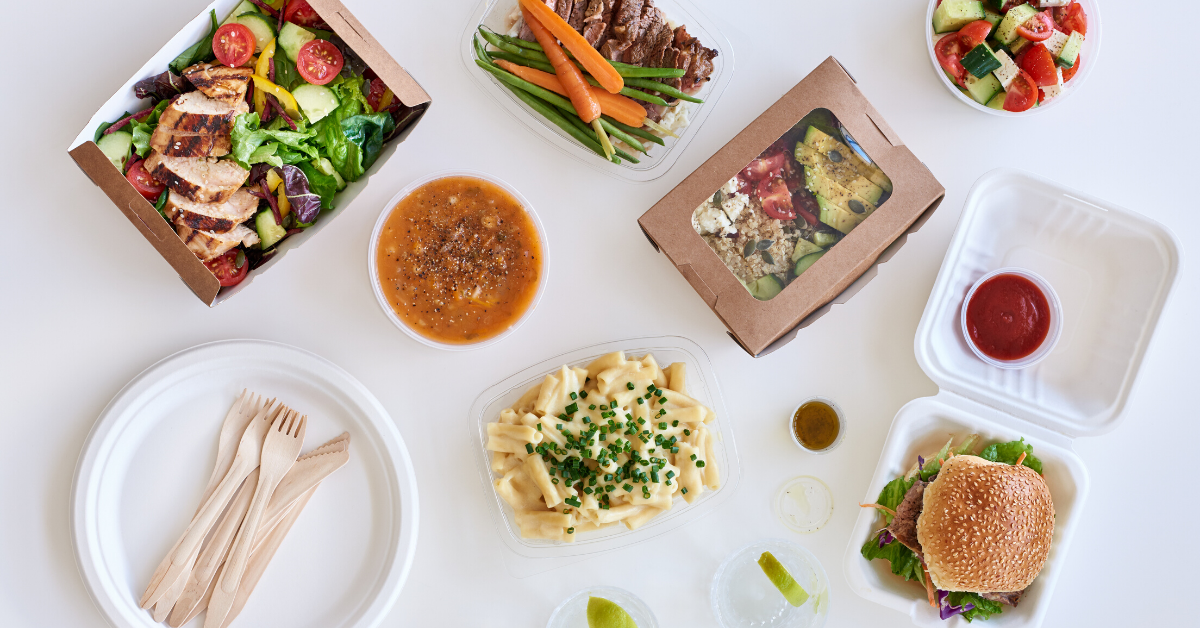5 Top Disposable Lunch Container Options

Although reusable containers are typically the way to go for school lunches, there are a number of circumstances in which disposable packaging is preferable. And if you are making lunches for others, it is often considered a necessity.
So what’s the best choice for disposable containers? We rank them each in terms of environmental impact, cost, quality and convenience.
Foam Containers
Foam containers have long been a mainstay of the food takeout industry. These white containers are typically made from polystyrene foam (like expanded polystyrene, or EPS, foam.)
PROS
These containers tend to insulate well and do a good job keeping hot food hot and cold food cold. They are also typically the cheapest option and are available in most grocery stores.
CONS
Polystyrene foam does not biodegrade (although there is work being done in this area). It is made from petrochemicals, and poses health risks to workers who manufacture it. It has been banned in a number of jurisdictions and may not be accepted in all schools.
Plastic Containers
Containers made from plastic are very popular, particularly with takeout restaurants where breaks and leaks are a concern. Usually produced from polypropylene.
PROS
Containers made from hard plastics are usually durable, leak-proof, and microwave and dishwasher safe. Plastic is lightweight, fairly compact to store, and will not absorb grease or liquids.
CONS
Plastic containers do not biodegrade and can’t always be recycled. Even if they can be, they are often discarded improperly and end up in landfill where they will not break down. They are produced from petrochemicals. They are often one of the more expensive options.
Paper and Cardboard Containers
From chow mein to fish and chips, paper products have been in use for years.
PROS
Paper and cardboard, depending on the coatings used on them, can biodegrade quite easily. Because they fold down, they are the easiest to transport and store.
CONS
Paper containers can absorb grease and liquids and can be quite fragile, making them unsuitable for heavy or liquidy food. Paper containers also do not typically feature food compartments which some others containers do.
Sugarcane, Bagasse and Other Starch-based Containers
As concerns over environmental impact have grown, new materials have been developed in order to minimize harmful effects of disposables. An example is bagasse, which is the dry pulpy residue left after the extraction of juice from sugar cane.
PROS
Sugarcane-based containers are biodegradable. They are made from a natural fiber and can compost in 30-60 days. In addition, most sugarcane-based containers are quite sturdy and are safe to use in the microwave and freezer.
CONS
Being relatively new on the market, sugarcane-based products can be a little more expensive than traditional alternatives. They can also be a little harder to find. If they are not disposed of properly, they can lose many of their environmental benefits.
Aluminum Containers
Being a metal, aluminum is the heavy-duty option for takeout containers. Typically, the base is made from aluminum while the lid is made from a paper-based material or plastic.
PROS
Often used for larger, heavier dishes, aluminum containers are very durable and can be used in an oven. They are excellent at conserving heat and, as long as the lid seal is tight, are leak proof. The containers can be reused to reheat food in the oven and are usually recyclable, if cleaned first.
CONS
Aluminum containers are not biodegradable and are resource-intensive to produce. They are also relatively expensive. And because the lids are typically made from a different material, disposal is more complicated.
Do you need to use disposable containers?
Finally, it is worth asking yourself if disposables are really the best way to go for you. Even though a lot of work has been done on improving the environmental impact of disposable containers and even though their use can reduce energy and water utilization, on balance it is clear that reusable containers are better for the environment. It may be worth exploring creative ways to use reusable containers - even if you are making lunches for others!